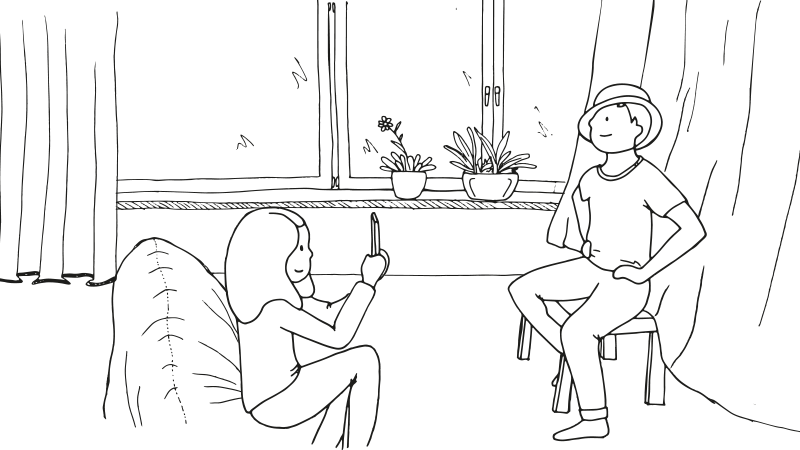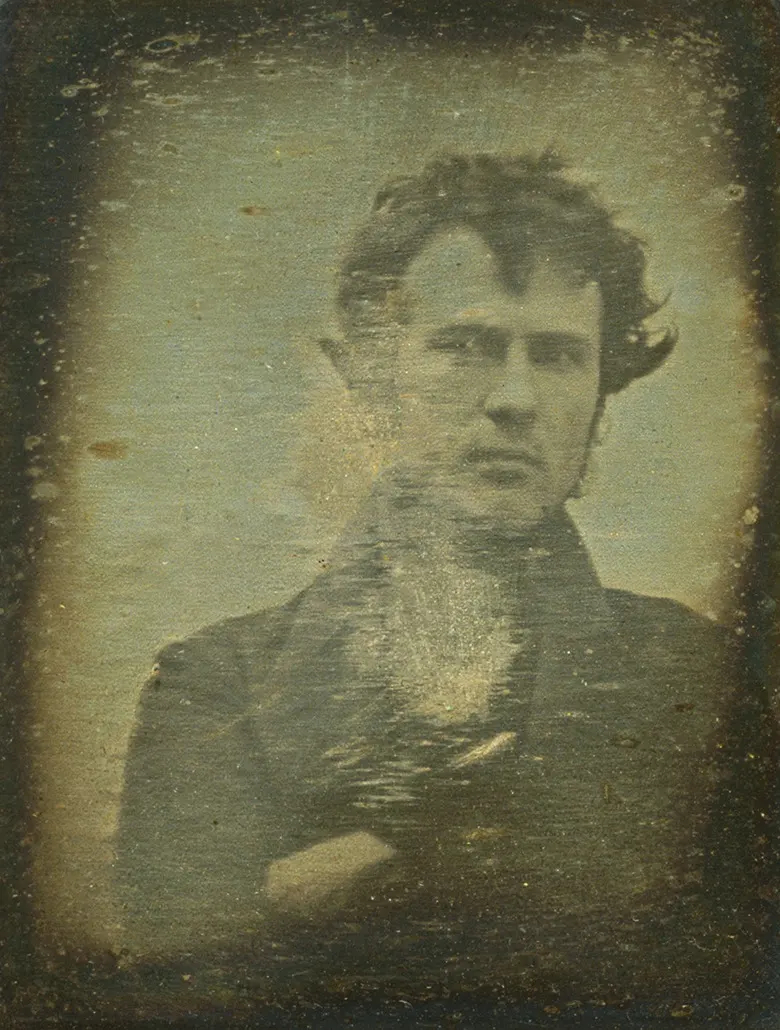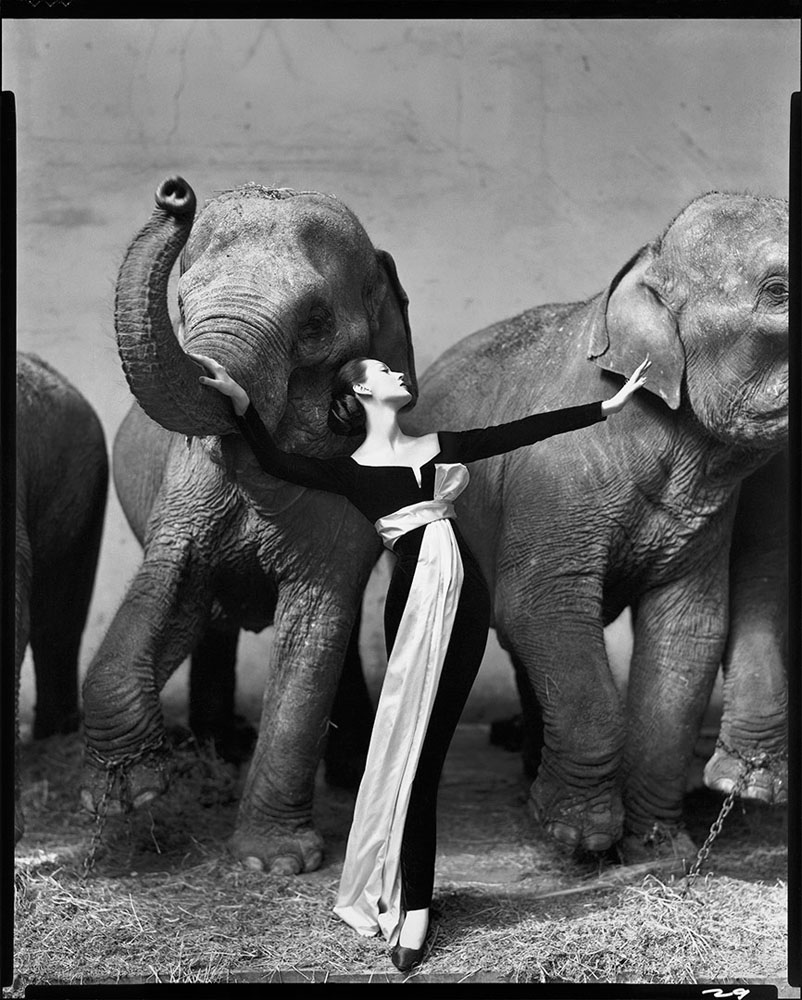Short description of the topic
Children get to know portrait photography and get to know the role of the portrayed and the photographer. In the portraits, they try to understand the emotions of the portrayed and describe what feelings they evoke. Children choose a set of their portraits and discard others and justify the decision. They learn that all people have the right to their own image.
Learning outcomes
-
Competencies
- Media competence: history of photography, photography technique, uploading and deleting photos
- Social competences: recognizing other people's emotions
- Critical thinking: the use of photographs of people in the modern world
-
Target group
4 years and up- Work in pairs
-
Required materials
- Camera
- Computer
- props (chair, toys, books, etc.)
-
Materials
- Photograph self-portrait of Robert Cornelius
- Photographies of portraits from different time periods

Download
(.pdf 464.46 KB)
Description of the activity (step by step)
Preparation:
Together in the group, look at the first portrait photograph ever taken by Robert Cornelius in 1839. Ask the children what they can notice (only black and gray colors, blurred, damaged, etc.). Describe the origin of photography. Then, show the children even older portraits. What do we notice? What are the positions of the people? Do they smile in the photos? Then, we look at portraits from other periods. In what positions people are now? We look at portraits in which people are happy, sad, and thoughtful and talk about how the people in photos probably feel.
Implementation:
The next step is the work in the "portrait studio." Let the children take pictures of each other in pairs. They can agree on what kind of portrait they would like to have. They can use props, stand, lie down, etc. Each couple should try different options and take several photos. Then, the photos are uploaded to a computer and viewed together with the couple who took the shots. The person portrayed can decide for himself which of his images should be printed and which should be deleted.
Reflection:
Let the children now choose the photo that best represents them. You can encourage them to say why. Would you be happy to show a photo to friends but not to your parents? Why did they want some photos to be deleted? Let’s take the opportunity to talk about the appropriate way to handle photos of ours and the photos of other people. Explain to the children that everyone has the "right to their own image." You can also mention to them that photos posted online stay there forever. Finally, you can prepare an exhibition of portrait photographs.
Variations and additional ideas
The activity can be linked to painting and children can be encouraged to draw a portrait of other children or a self-portrait. We can look at examples of famous portrait-paintings in the past. As an additional activity, children can also paint on the selected portrait photo and decorate it in any way they want.
Background information and didactical perspective
A portrait is a shot of a person or group of people who tries to capture the personality of the person being portrayed with the help of pose, background, and lighting.
In the first portrait, Robert Cornelius took a self-portrait (first selfie) by opening the aperture on his camera, running into the frame, standing there very still for about a minute, and then covering the aperture.
The right to one's own image: In Slovenia, everyone has the right to their own image. This means that everyone can decide alone whether to allow someone to photograph them or not. The only limitation is this: if you are in the picture only as an “add-on”, then you do not have this right. For example, if you stand in front of the Eiffel Tower, tourists can take a photo of the Eiffel Tower, even though you stand in the background or on the edge of the picture. They also have the right to publish this photo as well. Everyone also has the right to determine whether and which of his photographs will be published. This is one of the so-called personal rights. Some people, such as celebrities, such as actors, politicians, athletes, and musicians, have a limited right to privacy. Their photos of public appearances can be posted. Otherwise, an individual can only post photos that he has created himself. It is necessary to take into account the copyright of the photographer who took the photo (Source: Safe.si).





















